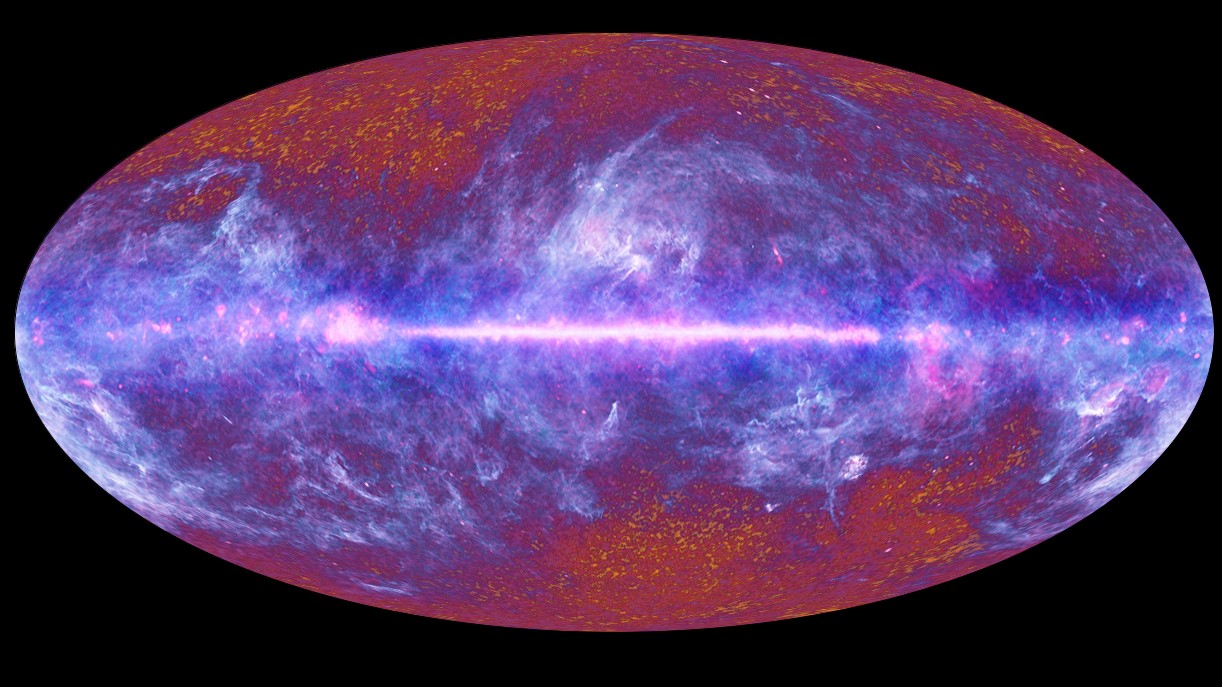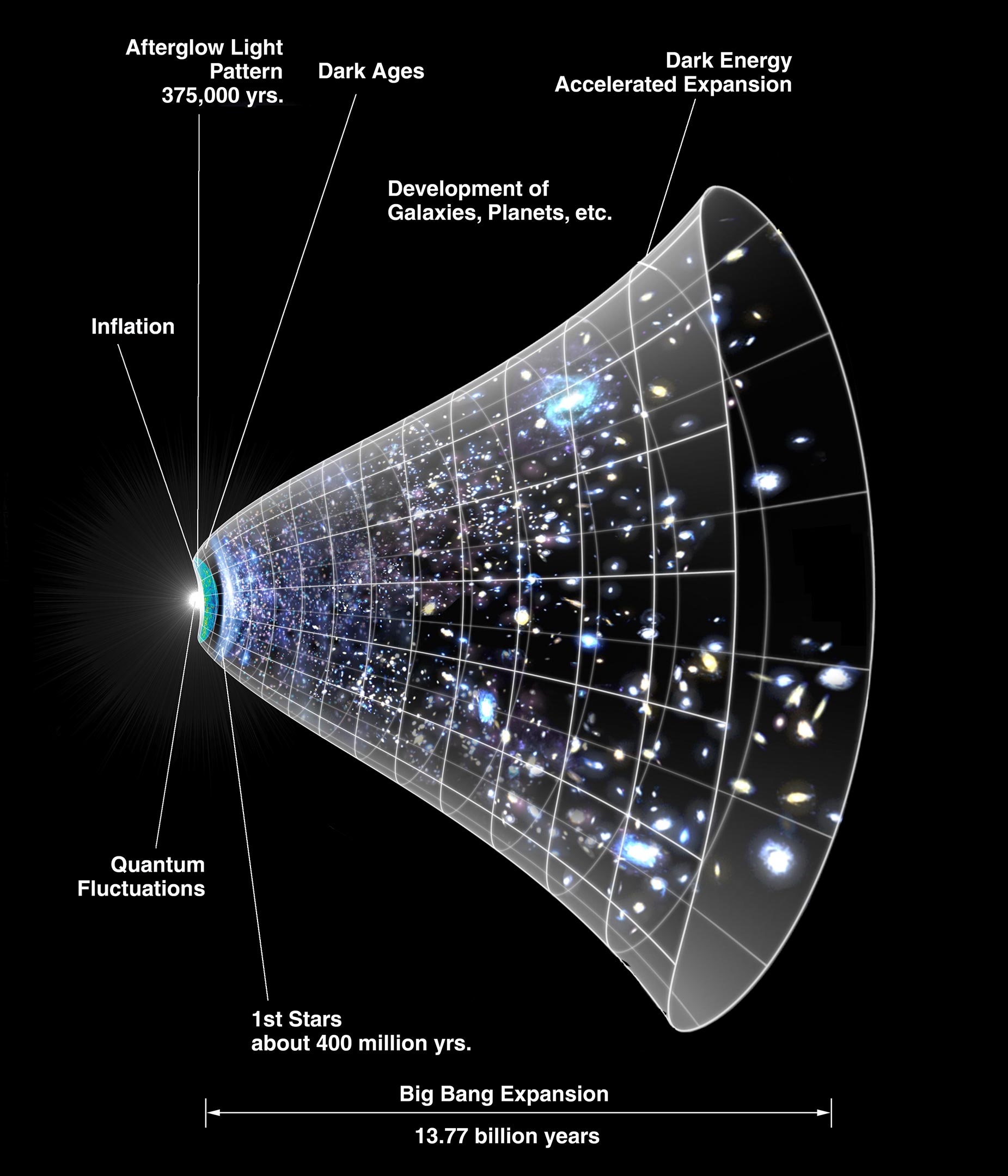Introduction
The Big Bang theory is the prevailing scientific explanation for the origins of the universe. It posits that the universe began as a single, infinitely dense point, which expanded rapidly in an explosive event known as the Big Bang. This theory has been the subject of intense scientific scrutiny and debate since it was first proposed in the early 20th century. In this article, we will explore the history and development of the Big Bang theory, as well as its key principles, evidence, and implications.
 |
| Cosmic Microwave Background Radiation |
The History of the Big Bang Theory
The concept of an expanding universe dates back to the early 20th century when scientists first began to study the properties of distant galaxies. In 1929, astronomer Edwin Hubble made a groundbreaking discovery: the light emitted by distant galaxies was shifted towards the red end of the spectrum, indicating that they were moving away from us. Hubble's observations led him to conclude that the universe was expanding and that this expansion was accelerating over time.
Building on Hubble's work, physicist George Gamow and his colleagues proposed the first version of the Big Bang theory in the 1940s. They argued that the universe had begun as a single, hot, and dense point, which had rapidly expanded in a massive explosion. This initial explosion had created all the matter and energy in the universe and had set in motion the processes that would eventually give rise to stars, galaxies, and planets.
Over the next few decades, the Big Bang theory underwent significant refinement and development. Physicists and astronomers developed new models and techniques for studying the universe and collected an ever-increasing amount of observational data to test their hypotheses. Today, the Big Bang theory is the most widely accepted scientific explanation for the origins of the universe and has been supported by a wide range of empirical evidence.
 |
| The Hubble Deep Field |
The Key Principles of the Big Bang Theory
The Big Bang theory is based on a few fundamental principles. First and foremost, it posits that the universe is expanding. This means that the distance between any two points in space is increasing over time. The rate of expansion is not constant but has been accelerating over the history of the universe.
Second, the Big Bang theory proposes that the universe began as a single, infinitely dense point. This point is often referred to as a "singularity." The singularity contained all the matter and energy in the universe and was characterized by extreme temperatures and densities.
Third, the Big Bang theory argues that the universe went through a rapid period of inflation immediately after the initial explosion. During this period, the universe expanded exponentially, growing from an infinitesimal point to a sizeable fraction of its current size in just a few fractions of a second.
Fourth, the Big Bang theory posits that the universe went through a series of important stages of development after inflation. During the first few minutes after the Big Bang, elementary particles such as protons, neutrons, and electrons were created through a process known as nucleosynthesis. As the universe cooled and expanded, these particles began to combine to form atoms, which in turn gave rise to the first stars and galaxies.
 |
| Distribution of Galaxies |
Evidence for the Big Bang Theory
The Big Bang theory has been supported by a wide range of observational and experimental evidence. Some of the most compelling pieces of evidence include:
The Cosmic Microwave Background Radiation (CMBR): The CMBR is a faint but pervasive radiation that permeates the entire universe. It is thought to be the leftover radiation from the Big Bang and provides a snapshot of the universe just 380,000 years after the initial explosion. The CMBR has been observed and measured by a number of different telescopes and satellites, and its characteristics are consistent with the predictions of the Big Bang theory.
The Abundance of Light Elements: The Big Bang theory predicts that the early universe was composed of mostly hydrogen and helium, with trace amounts of other light elements. Observations of the cosmic abundances of these elements are consistent with the predictions of the Big Bang theory.
The Large Scale Structure of the Universe: The distribution of galaxies and clusters of galaxies in the universe is also consistent with the predictions of the Big Bang theory. The observed large-scale structure of the universe can be explained by the initial conditions set forth by the Big Bang.
 |
| Expansion of the Universe |
Implications of the Big Bang Theory
The Big Bang theory has profound implications for our understanding of the universe and our place within it. Perhaps most importantly, it suggests that the universe had a definite beginning and that everything in the universe is ultimately connected to that initial explosion. This has led some scientists and philosophers to speculate about the ultimate fate of the universe and the possibility of multiple universes.
The Big Bang Theory has also given rise to a number of other important fields of study, including cosmology, astrophysics, and particle physics. Scientists continue to study the properties of the universe and the behavior of matter and energy at the smallest scales in order to better understand the origins and evolution of the cosmos.
Conclusion
The Big Bang Theory is a well-established scientific theory that provides a comprehensive explanation for the origins of the universe. It is based on a few key principles, including the expansion of the universe, the existence of a singularity at the beginning of time, and a period of rapid inflation immediately after the initial explosion. The Big Bang theory has been supported by a wide range of observational and experimental evidence, including the Cosmic Microwave Background Radiation, the abundance of light elements, and the large-scale structure of the universe. The Big Bang theory has profound implications for our understanding of the universe and our place within it and continues to be an active area of research and investigation in the fields of cosmology, astrophysics, and particle physics.
Despite the many successes of the Big Bang theory, there are still some areas of uncertainty and open questions. For example, the theory does not explain the nature of dark matter and dark energy, which are thought to make up the majority of the mass and energy in the universe. In addition, the theory does not provide a complete explanation for the initial conditions of the universe, such as why the universe started with a certain density and composition. Finally, some scientists have raised questions about the validity of the theory itself, suggesting that it may need to be revised or even replaced by a new model of the universe.
Despite these uncertainties, the Big Bang theory remains the most widely accepted model of the universe and has been incredibly successful in explaining a wide range of observed phenomena. In addition to its scientific significance, the theory has also captured the public imagination and has become an important cultural touchstone, inspiring countless books, films, and television shows.
Overall, the Big Bang theory is an important milestone in our understanding of the universe and its origins. While there are still many questions to be answered and areas of uncertainty to be explored, the theory has provided a solid foundation for further research and investigation. By continuing to study the properties of the universe and the behavior of matter and energy at the smallest scales, scientists will be able to deepen our understanding of the cosmos and our place within it.


0 Comments